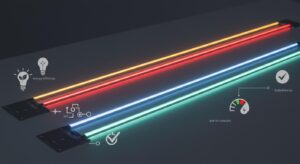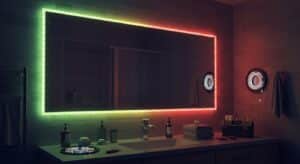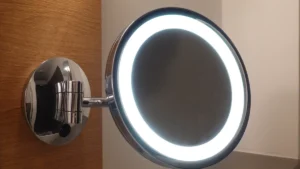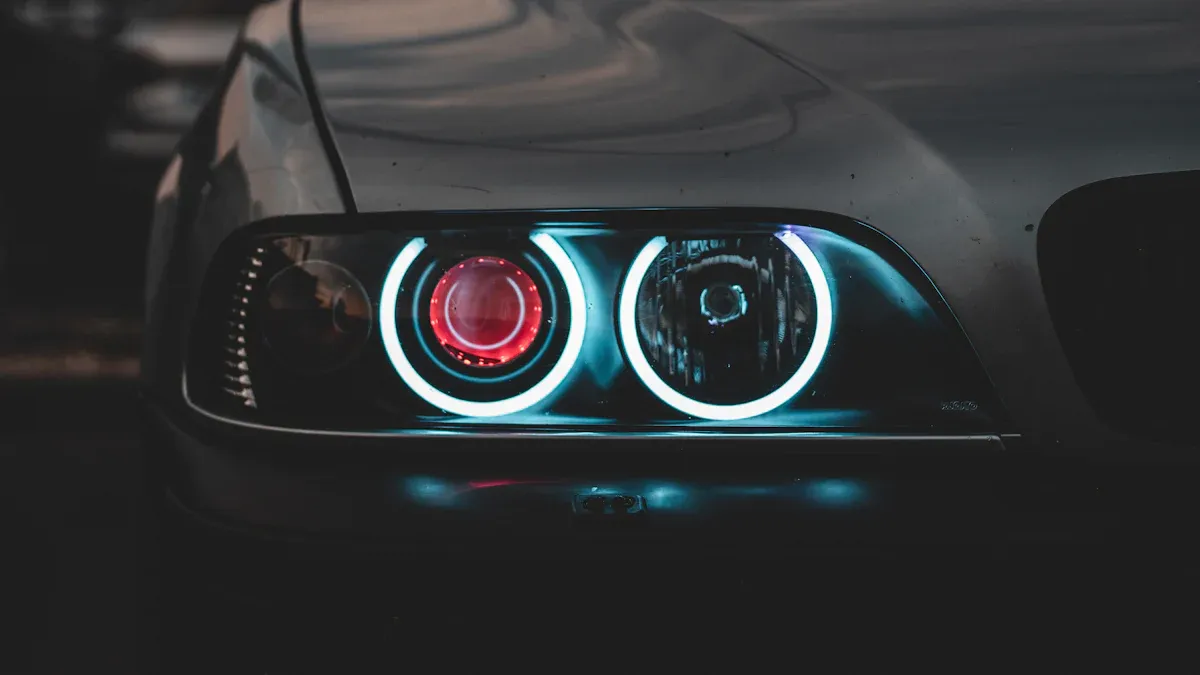
LED light strips are now a favourite for car lovers. The market for these lights may grow from USD 6.7 billion in 2023 to USD 12.5 billion by 2032. This is because people want energy-saving lights and unique designs. These strips make your car look stylish and improve visibility. You can light up the inside of your car or add cool underglow effects. LED light strips let you be creative in many ways.
Key Takeaways
LED strips make your car look cool and brighter. They let you add fun lights inside and outside your car.
Have the right tools and items to set them up. You’ll need a tape measure, soft cloth, and good LED strips.
Stay safe and check rules in your area first. This keeps your car customisation safe and legal.
Tools and Materials for LED Light Strips
Tools You’ll Need
To put LED light strips in your car, you need some tools. These tools make the job easier and safer. Here’s what you’ll need:
Tape measure: Measures the area for the strips.
Microfiber cloth: Cleans surfaces so strips stick well.
Scissors: Cuts the strips to the right size.
Screwdriver set: Helps attach extra parts securely.
Multimeter: Checks voltage and keeps connections safe.
Using these tools makes the installation simple and safe.
Materials Required
Having the right materials is key to a good setup. Here’s what you’ll need:
LED strip lights
Power supply (like a driver or transformer)
Connectors for joining multiple strips
Adhesive tape or clips for mounting
Heat shrink tubing to protect wires
Good LED strips have a shiny coating for brighter light. Choose strips with at least 2 oz copper to avoid power loss. Also, ensure they use 10 watts per metre for the best results.
Extra Accessories for Better Setups
If you want a more advanced setup, try these extras:
Accessory Type | Benefits |
|---|---|
DMX Decoders and Controllers | Create cool lighting effects. |
Lighting Control Sensors | Let you control lights hands-free. |
Solderless Connectors | Make installation quicker and easier. |
Outdoor IP65 Grip Connectors | Keep outdoor setups strong and durable. |
Extra Wire | Gives more options for custom designs. |
Many people like solderless connectors because they save time. Hands-free sensors are also useful and make your setup more convenient.
How to Install LED Light Strips
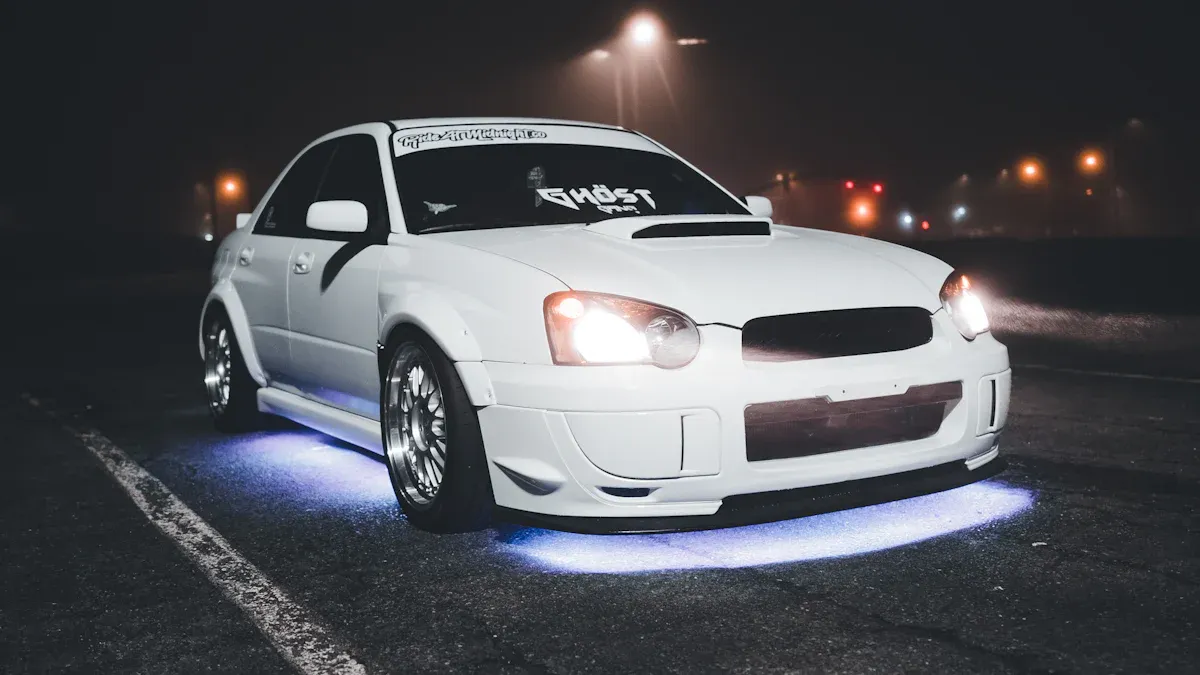
Planning Your Design and Placement
Plan your design before installing LED light strips. Measure the areas where you’ll place the strips. Use a tape measure to check the length needed. Think about bends or corners in your layout. This helps you buy the right amount and avoid waste.
Decide the purpose of your lights. For underglow, place strips under the car. Keep them hidden for a neat look. For inside lighting, focus on footwells, dashboards, or doors. Don’t put strips where they shine directly into your eyes.
Tip: Draw your design on paper to see how it will look. Make changes before starting.
Preparing the Car for Installation
Clean surfaces properly so the strips stick well. Use a microfiber cloth with warm, soapy water to clean. Remove dirt, grease, or dust. Let the surface dry fully before moving on.
If you need to cut the strips, use scissors at the marked points. This stops damage to the wires inside. Check your measurements again to be sure.
Attaching and Wiring the LED Light Strips
Peel off the adhesive backing to stick the strips. Press them firmly onto the surface. For bumpy areas, use hot glue or clips for extra hold.
When wiring, connect the strips to the power supply. Match the positive and negative ends correctly. If joining more strips, secure the connections with heat shrink tubing.
Note: Solderless connectors make installation faster and easier.
Testing and Adjusting the Lights
After installing, test the LED light strips to check they work. Plug the power supply into an outlet and turn on the lights. Look for dim spots or flickering. Move the strips if needed to get the best look.
To ensure they last, do a burn-in test. Run the lights for 8-12 hours to check reliability. Check the connections and adhesive often to keep everything in good shape.
Safety and Legal Guidelines for LED Light Strips
Safety Tips for Installation and Use
Staying safe while using LED light strips is very important. Good-quality parts lower the chance of overheating or fires. Always check if your LED strips match the right voltage. For example, DC strips should not connect to AC power.
Keep LED strips away from things that can catch fire, like paper or fabric. This helps prevent accidents. If you are unsure how to install them, hire an expert. They will follow safety rules and do the job correctly.
These safety steps work well, as shown by user reviews. Millions of LED strips have been safely used when installed properly. The table below lists key safety tips:
Safety Tip | Description |
|---|---|
Use good-quality parts | Reduces heat and lowers fire risks. |
Keep away from flammable items | Stops fires by avoiding loose, burnable materials. |
Match the correct voltage | Makes sure electrical connections are safe. |
Hire an expert | Ensures proper setup and follows safety rules. |
Legal Restrictions on LED Light Strips
Rules about LED light strips on cars differ by location. These laws aim to make roads safer and protect the environment. For example, commercial vehicles must meet lighting rules to avoid accidents.
Check your local laws before adding LED strips to your car. Some places ban certain colours, like red or blue, as they might confuse drivers. Companies are now designing products to meet these new safety and eco-friendly rules.
The table below shows important legal points:
Aspect | Details |
|---|---|
Regional Differences | Laws change by area, so check before installing. |
Eco-Friendly Standards | New rules focus on making products better for the planet. |
Importance of Following Laws | Both makers and users must follow safety rules. |
By following these rules, you can use LED strips safely and legally.
Creative Ways to Customise Your Car
Underglow Lighting Effects
Underglow lighting is a cool way to upgrade your car’s look. Adding LED light strips under your car creates a glowing effect. This makes your car noticeable, especially at night. Pick colours that match your car’s paint or go for colour-changing lights for a bold style.
Place the strips where they stay hidden for a neat finish. Use strong, waterproof strips to handle rough roads. Many car fans love underglow lighting because it turns their car into a moving piece of art.
Tip: Don’t use red or blue lights in areas where they could be confused with emergency vehicle lights.
Interior LED Light Strip Ideas
Interior lighting gives you many ways to personalise your car. Add LED light strips to the dashboard, doors, or footwells for a cosy and stylish feel. For extra fun, try sound-activated lights that move with your music.
Interior lights not only look good but are also useful. Soft lights in footwells help you find things in the dark. Car makers now use more LED lights inside cars because people want custom designs and modern features.
Pro Tip: Choose dimmable strips to control brightness for comfort and safety.
Themed Colour Schemes and Patterns
Themed colours let you show your style through your car. Whether you like simple colours or a rainbow effect, LED light strips can make it happen.
Studies show that matching colours improves how things look. Tools can help you test colour ideas to create certain moods. For example, red and orange give a sporty feel, while blue and green feel calm.
Note: Plan your colours carefully to match your car’s overall style.
Adding LED light strips can make your car look amazing. Always focus on safety when installing them. Follow local rules to avoid problems. Try different designs to show your style. With good planning, your car can become a beautiful work of art.
FAQ
How long do LED light strips last?
Good-quality LED light strips can work for 30,000 to 50,000 hours. Their lifespan depends on how you use them, how well they are installed, and the environment they are in.
Can you put LED light strips in without hiring someone?
Yes, you can install them yourself. Just follow the steps carefully, use the correct tools, and make sure the wiring is done properly for a safe and working setup.
Are LED light strips safe to use outdoors?
Many LED light strips are waterproof, with ratings like IP65 or IP67. Always check the product details to see if they are good for outdoor or undercar use.
Tip: For outside use, pick waterproof strips with strong adhesive to handle weather changes.
See Also
Customising Your COB LED Strips For Unique Effects
Effective Installation Techniques For RGB LED Strip Lights
Creative Design Possibilities With Flexible COB LED Strips
Installing LED Strip Lights Successfully: A 2025 Guide
Creative Christmas Lighting Ideas Using LED Strip Lights
